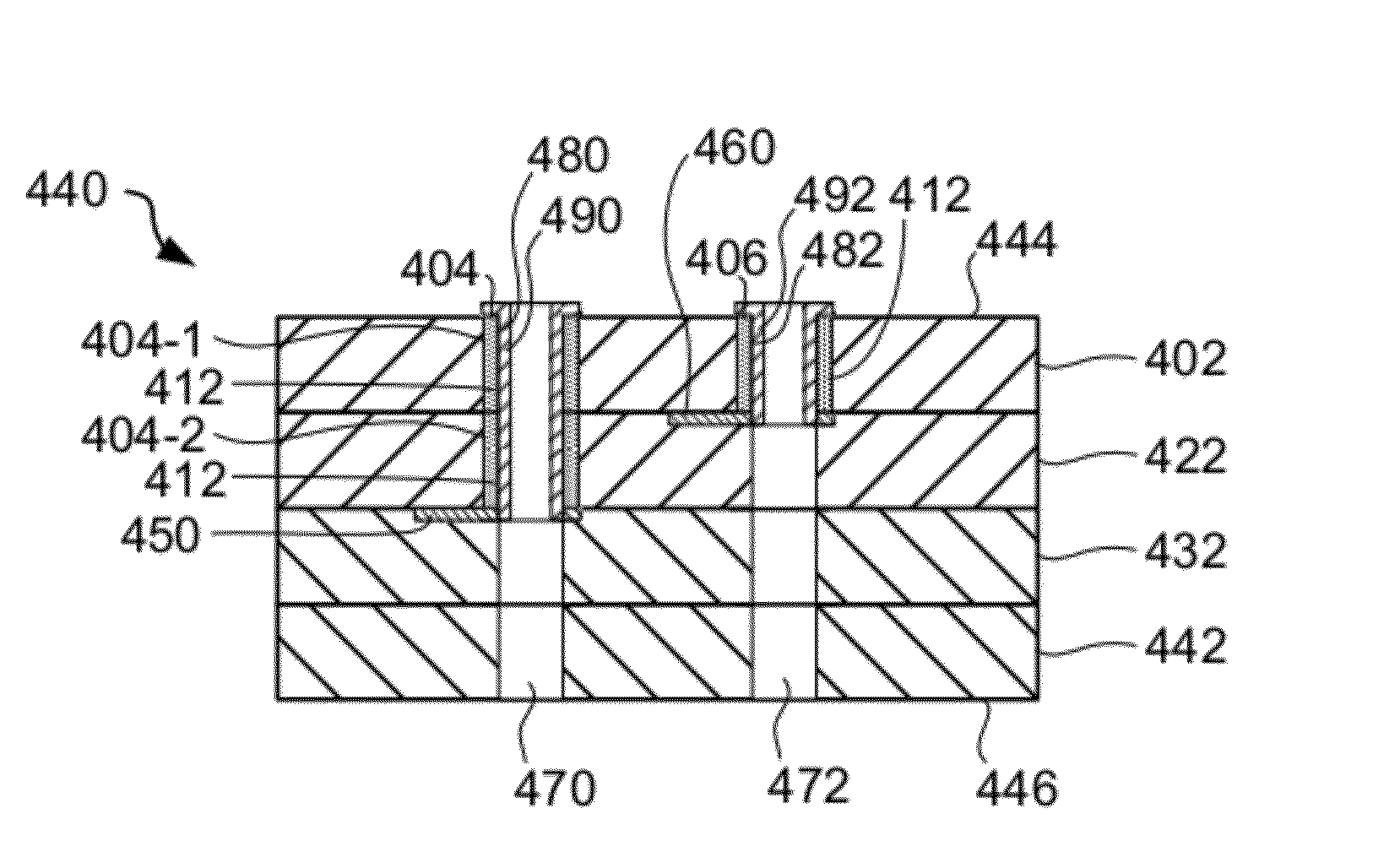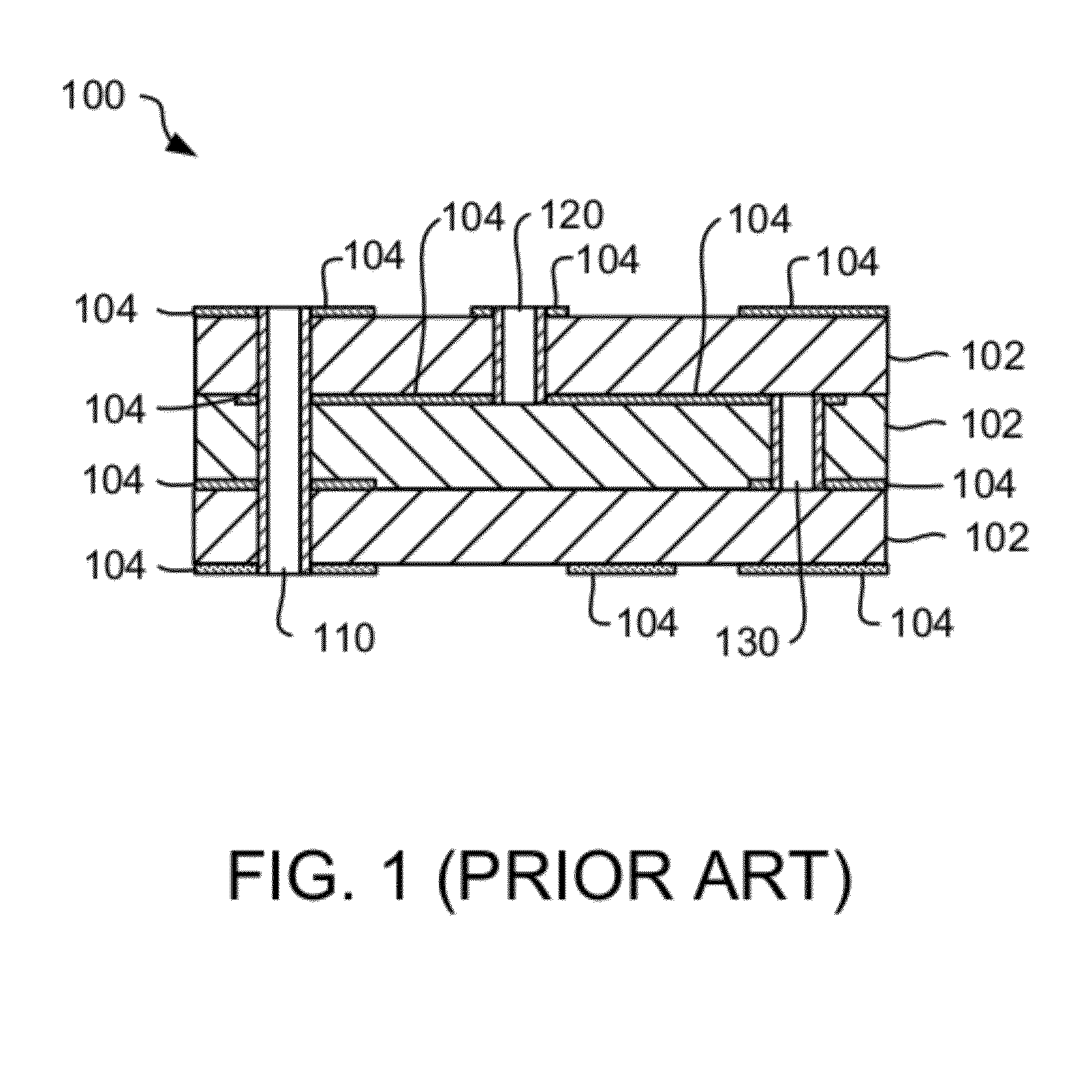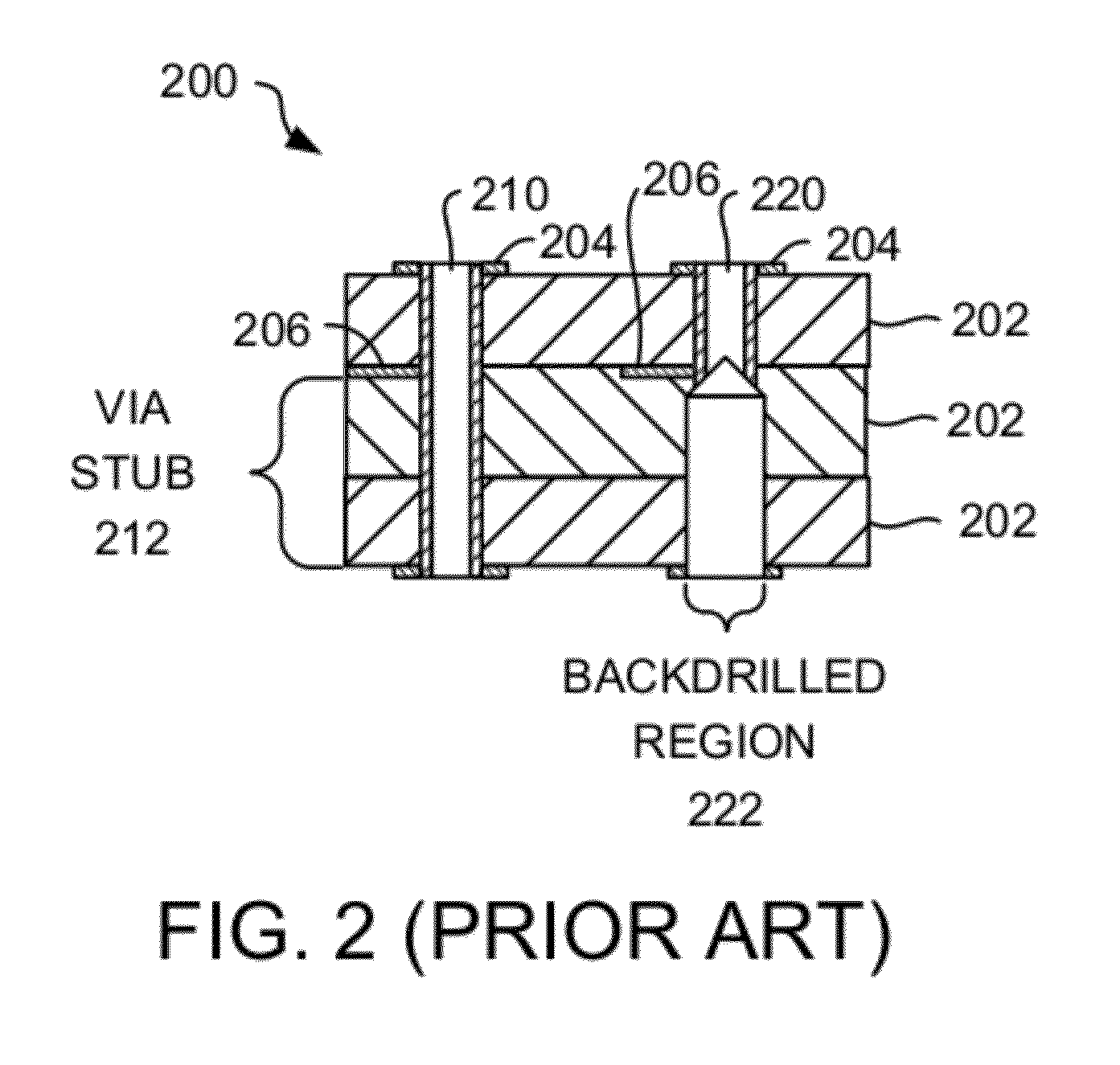Laser Resin Activation to Provide Selective Via Plating for Via Stub Elimination
a technology of laser resin activation and selective via plating, which is applied in the field of selective via plating for eliminating via stubs, can solve the problems of buried vias, blind vias and buried vias are significantly more expensive to fabricate than pth vias, and backdrilling is a and achieve the effect of eliminating the costly and time-consuming process of backdrilling vias
- Summary
- Abstract
- Description
- Claims
- Application Information
AI Technical Summary
Benefits of technology
Problems solved by technology
Method used
Image
Examples
Embodiment Construction
[0024]In accordance with the preferred embodiments of the present invention, laser resin activation is employed on a layer-by-layer basis to provide selective via plating and, thereby, achieve via stub elimination in printed wiring boards (PWBs) and other substrates, such as laminate subcomposites and interconnect substrates. To facilitate laser resin activation, at least one spinel-based electrically non-conductive metal oxide (e.g., the copper-containing spinel PK 3095 made by Ferro GmbH) is added to a conventional resin used to fabricate one or more insulator layers of the PWB. Preferably, only insulator layers through which vias will pass contain the metal oxide. Those layers are registered and laser irradiated at one or more via formation locations to break down the metal oxide and release metal nuclei. Laser irradiation is performed on a layer-by-layer basis to create areas of laminate that are electrically conductive and that can be dimensionally precisely controlled. This en...
PUM
| Property | Measurement | Unit |
|---|---|---|
| Electrical conductor | aaaaa | aaaaa |
Abstract
Description
Claims
Application Information
 Login to View More
Login to View More - R&D
- Intellectual Property
- Life Sciences
- Materials
- Tech Scout
- Unparalleled Data Quality
- Higher Quality Content
- 60% Fewer Hallucinations
Browse by: Latest US Patents, China's latest patents, Technical Efficacy Thesaurus, Application Domain, Technology Topic, Popular Technical Reports.
© 2025 PatSnap. All rights reserved.Legal|Privacy policy|Modern Slavery Act Transparency Statement|Sitemap|About US| Contact US: help@patsnap.com



